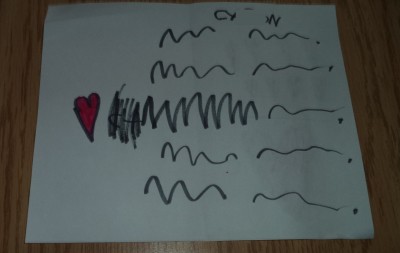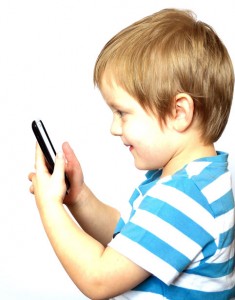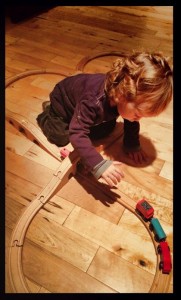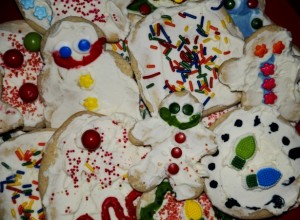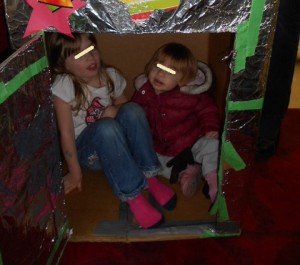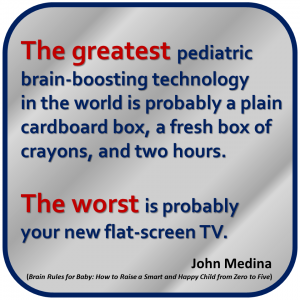Making cards with kids is almost as much fun as getting valentines; some simple ideas and creativity turn it into a play-of-the-day. These three examples may inspire you and your kids.
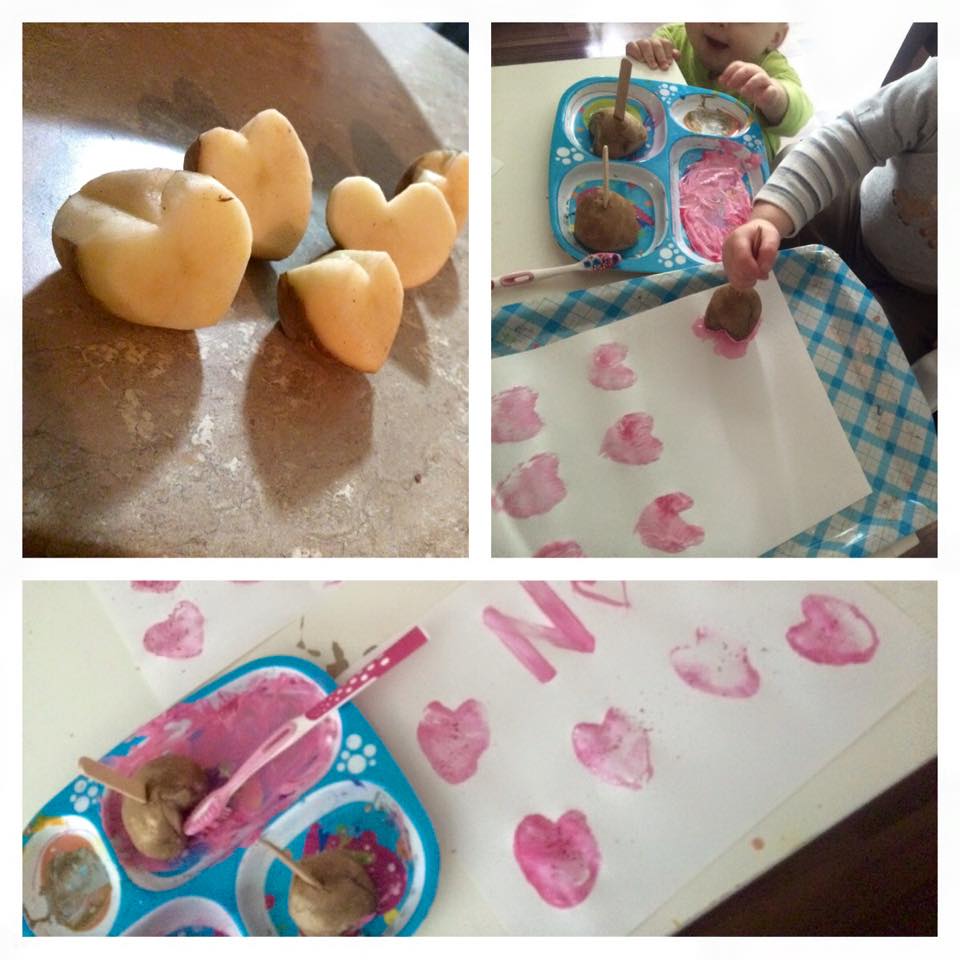 This year, a friend’s really big sister used some potatoes in an experiment for a science fair. Her little sister used the left-over potato halves to make some potato print valentines. To make these, cut a notch in potato to make a heart shape. Kids hold the potato and dip it into paint, then stamp onto a card or paper. If the potato is too big for a little hand to grasp, stick a fat popsicle stick into the potato to use as a handle. This looked like so much fun, that the really little one came to check it out. When dry, kids only need add their name.
This year, a friend’s really big sister used some potatoes in an experiment for a science fair. Her little sister used the left-over potato halves to make some potato print valentines. To make these, cut a notch in potato to make a heart shape. Kids hold the potato and dip it into paint, then stamp onto a card or paper. If the potato is too big for a little hand to grasp, stick a fat popsicle stick into the potato to use as a handle. This looked like so much fun, that the really little one came to check it out. When dry, kids only need add their name.
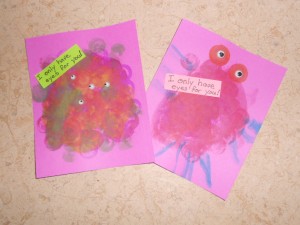 Here are two other suggestions for cute valentines. Last year, Big Sister made some monsters on cards and we glued on googly eyes. The caption was “I only have eyes for you.” Monsters can have any number of eyes, legs, and arms, and be any color. Scribbling with paint or crayons makes great monsters.
Here are two other suggestions for cute valentines. Last year, Big Sister made some monsters on cards and we glued on googly eyes. The caption was “I only have eyes for you.” Monsters can have any number of eyes, legs, and arms, and be any color. Scribbling with paint or crayons makes great monsters.
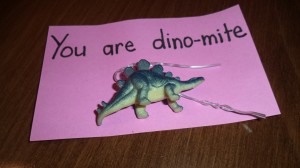 For some dynamite valentines, find some small dinosaurs at the dollar store. Adult hands print “You are dino-mite.” Kids print their name. Attach the dinos with a twist tie poked thru the card or just with tape.
For some dynamite valentines, find some small dinosaurs at the dollar store. Adult hands print “You are dino-mite.” Kids print their name. Attach the dinos with a twist tie poked thru the card or just with tape.
Children start scribbling and making marks on paper (or walls) as early as a year and half old. At this stage though, the interest is the action of their bodies rather than the action of writing. Older toddlers and preschoolers are figuring out how these marks and print have meaning. They need lots of experiences communicating with something in print to understand what the process is about. The long valentine is by a 5 year old who knows print goes in a line and has the letters in his name.
Valentines is a tremendous way for children to be involved in writing and sending messages. Have you some other suggestions for making valentines with kids?

